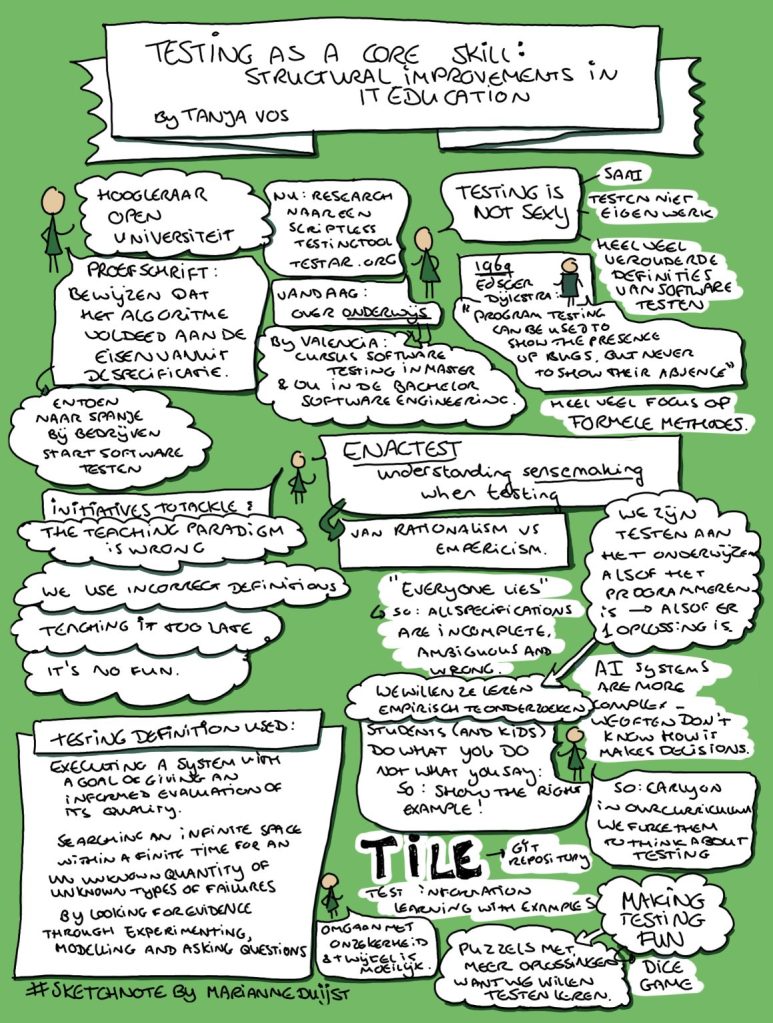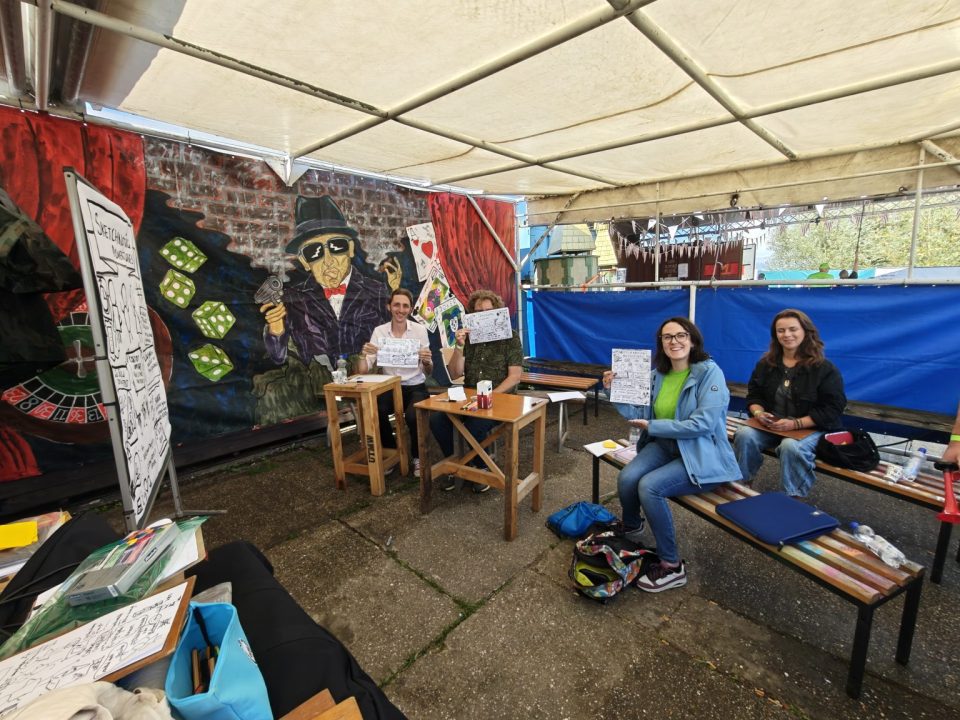On Friday 5th September, SpaceRockIT Festival gathered at the location of a music festival. In such inspiring surroundings, with beautiful September weather (including a downpour of epic proportions followed by lovely sunshine!), we talked, shared and learned. Such a fabulous day!
The day started with Tanja Vos‘s keynote: Testing as a Core Skill: Structural Improvements in IT Education. Tanja is a professor at the Open University and the University of Valencia. In teaching testing, she is increasingly trying to teach students to investigate empirically. Testing is not a large subject within IT Education and it is often considered boring. Much emphasis is often on formal methods, and it is often taught too much like programming: where there is ONE working answer. So, she and her colleagues are increasingly using puzzles like the dice game, and other cognitive puzzles that have multiple possible answers and encourage students to sit with uncertainty and doubt, and encourage them to reason and explain their answers.

For me, it reminded me of the small riddle that Liz Keogh posted at EuroSTAR in 2016: in the sequence
1 2 ? 4 5
What takes the place of the question mark? The answer 3 was immediately and confidently shouted through the room at the time, and I noticed my own hesitation as there are multiple answers possible. For example, you can add a colon, and state it’s the time: a quarter to one.
I was intrigued by the definition of testing that Tanja used:

After the keynote, I chose to join Tanja, Huib Schoots and Niels Doorn’s workshop Sharpen your critical mind, solving the puzzle. In this workshop, they had us do some of the puzzles referred to in the keynote, and I had a blast. It was fun to play and observe what was happening – both in the room and in my own mind.

After the workshop and a lovely lunch, Hanno Embregts discussed HTTP statuses in his presentation: HTTP: How Teenagers Talk to Their Parents. Hanno presented it well and I thoroughly enjoyed his examples. They bring the HTTP statuses alive in a way I hadn’t quite visualised before.

Then it was time for my own workshop: Sketchnote Adventures! Improve Your Notetaking Skills
Sketchnoting Adventures: Improve your note-taking skills.
A hands-on journey to visualization and listening
Ready. Steady. Draw! Listen. Brainstorm. Visualize. Experiment & Share.
Sketchnoting is a creative way of taking notes of talks, training and meetings. Through a unique combination of text and graphics, sketchnotes highlight the core of the sessions, focus your attention and allow you to communicate ideas more quickly and widely. Visualization helps wonders when brainstorming new ideas, such as test charters, product creation or retrospectives. There’s something about seeing your and your team’s ideas beautified on the page that really sparks your imagination and wild ideas. Luckily, you don’t need to be an artist or a creative genius to harness the power of sketchnotes . Join me on this hands-on journey to improve your notetaking skills. Put pen to paper and experiment. Improve your attentive listening. Allow yourself time to slow down in order to speed up. Expand your visual library and combine visuals with text. Choose your constraints and dare to share your work. Learn how to harness the power of sketchnotes and visualization in office. This workshop is suitable for everyone who is willing to experiment regardless of artistic skill.

The last session I attended was Hanno Embregts’s session When Music and Software Come Together and enjoyed all the songs he performed: new lyrics on familiar melodies.
And then the content part of the day was over, and the music festival started properly. Closing the day with music, conversations and fun: it was an inspiring day. Thank you to Francis Welbie for organising the festival, Bart Knaack for asking me to host a session, and Fieke de Vreede, Lianne Klaver, Tanja Vos and Iris Pinkster for all the conversations among many others.

Tickets for next year: September 4th 2026 are already available https://www.spacerockitfestival.nl/
All sketchnotes were made on the day itself on a reMarkable Pro, and then transferred to an iPad to get coloured in Procreate. All human-drawn (by me!) with absolutely NO GenAI involved.

 English | EN
English | EN 